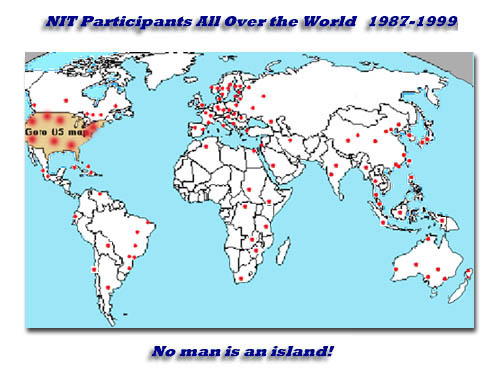
In the last couple of years, we have experienced how new information technology has transformed the way we live, learn, work and play. The fast and dynamic advances in computing and communications technologies have created a new infrastructure for education, research, commerce, and social interaction. As a result libraries and information centers can make available to their users a previously unknown level of service, featuring powerful global information access, retrieval and delivery capabilities.
In addition to the fast developments in telecommunication networks, electronic publishing, interactive multimedia technologies, integrated information systems, and digital libraries, the explosive and widespread use of the Internet and World Wide Web have enabled librarians and information specialists to offer unprecedented information services. In the areas of digital libraries, there are incredible opportunities for global information access and sharing with distributed information systems. On the other hands, cyberspace is becoming a dominant medium through which people can create and share information and ideas without the formal information delivery structure. This has posed great challenges to libraries and information centers.
The coming of the Next Generation Internet in this new millennium will offer hundreds and thousands times more capabilities for faster and better digital communications. Thus, we will see more and bigger distributed digital libraries or information systems with multimedia information developed everywhere in the world. Yet, in order to create these widely distributed systems effectively, we shall need to know how to create them in such a way that they can operate in multiple languages, formats, media, and social and organizational contexts so that they can be easily connected, interoperable, and retrievable. In addition, we shall also need to know how to protect intellectual properties in this fluid and uncontrollable cyber marketplace. These high-order research problems can only be tacked by international experts from many related interdisciplinary fields – library and information science, computer science, multimedia, communications, networking, linguistics, law, social sciences, and the like. NIT '2001 has decided to focus more in these topics.
Eleven Conferences on New Information Technology (NIT) have been organized successfully since 1987 in Bangkok, Singapore, Guadalajara, Budapest, Hong Kong, Puerto Rico, Alexandria (Virginia, USA), Riga (Latvia), Pretoria (South Africa), Hanoi (Vietnam), and Taipei. This series of conferences has helped to force global consensus on key problems and issues facing library and information professionals during this exciting but confusing time. As we have entered the new Millennium, this latest conference in Beijing with its exciting technical environments at Tsinghua University is intended to do the same. It will provide maximal opportunities for formal and informal discussions among participants from both developed and developing countries. Professionals in related fields will have stimulating and rewarding interactions with each other. More background information on NIT conferences can be found in the 1998 published "Message from the Chief Conference Organizer."
What is new with this particular NIT is that, in addition to the NIT's original goals and objectives, this conference will be held on the impressive campus of the world-renowned Tsinghua University in Beijing as one of the celebration events for its 90th Anniversary. In line with the pioneering spirit of Tsinghua, we have chosen such a ground-breaking theme for international professionals from different fields interested in global digital libraries to gather together and contemplate the great challenges facing them in this new Millennium. It is a most fitting one to pay tribute to this great university because this conference will contribute to the effort to encourage productive interchange of knowledge and data of distributed digital systems around the world, and to prevent the development of fragmented digital systems with unproductive duplication of efforts.




